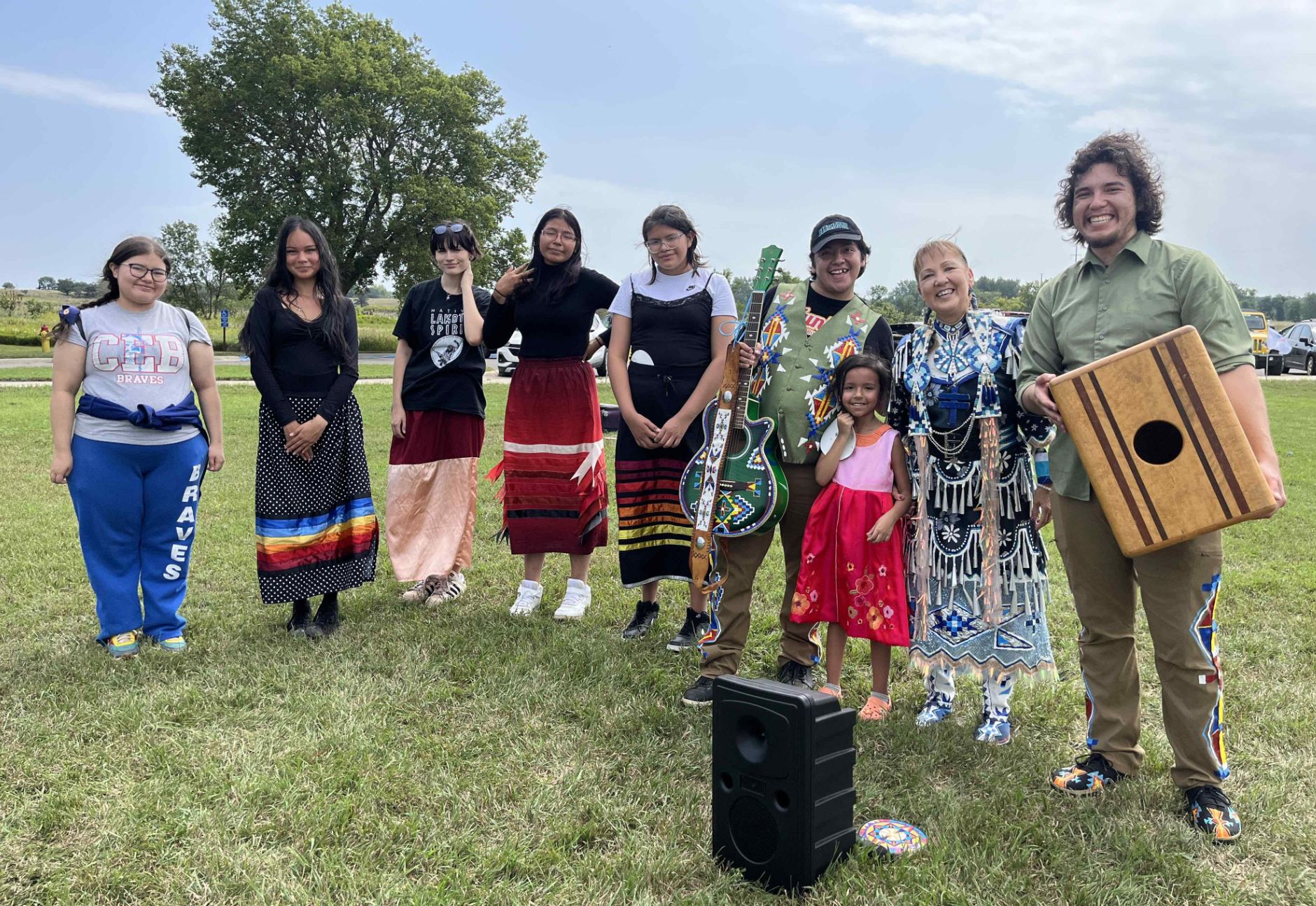
- Details
- By Levi Rickert
EAGLE BUTTE, SD — This summer, five young women from the Cheyenne River Sioux Reservation had the opportunity to visit Pipestone National Monument for Founders Day, an annual celebration that incorporates a variety of cultural activities and experiences. The nonprofit Cheyenne River Youth Project arranged the Aug. 23-25 trip for the teens, who ranged in age from 14 to 18.
For more than 3,000 years, native peoples have quarried the red stone at this location to make pipes for prayers and ceremonies. The tradition continues today, making Pipestone a sacred site for many — including the Lakota people.
“For us, connection to land is essential to our long-term health and well-being,” said Julie Garreau, CRYP’s chief executive officer. “Our Lakota culture is deeply rooted in this connection, so we are dedicated to giving our young people every possible opportunity to visit our sacred places. The land is part of who we are.”
Many of these sacred places lie far from the Cheyenne River reservation, home to four bands of the Lakota Nation. The reservation was established in 1889, when the Great Sioux Reservation was broken up into several smaller reservations, and the people lost access to sites that are critical to their cultural health.
“I’ve never been to Minnesota and didn’t know we had relatives as far away as here,” said Loula, 14. “It’s cool we (Lakota people) are spread out so far.”
“I talked with the young women about the importance of connecting to the land and taking care of it,” said Jerica Widow, CRYP’s programs director, who chaperoned the teens. “Although we are far from home, this is still Oceti Sakowin (Seven Council Fires) land.”
Widow invited teens enrolled in CRYP’s current Native Food Sovereignty and Lakota Culture internships to participate in the August trip, and the youth project opened up the opportunity to teens in the general community as well. The group left Eagle Butte on Friday morning, Aug. 23 and drove five hours to Pipestone, Minnesota.
Founders Day on Saturday, Aug. 24 was a busy one for the Cheyenne River teens. Not only did they have an opportunity to witness quarrying, traditional flute and foodway presentations, they learned how to make an atlatl and engage in target practice.
An atlatl is a spear-throwing device that allows hunters to launch projectiles more than 100 yards at speeds up to 100 miles per hour. This Stone Age technology is powerful and effective, and evidence indicates it has been used for approximately 30,000 years.
While they were at Pipestone, the teens also connected with longtime hoop dancer and culture bearer Jackie Bird, a member of the Sisseton Wahpeton Tribe of South Dakota and the Three Affiliated Tribes of North Dakota.
More Stories Like This
Native News Weekly (August 25, 2024): D.C. BriefsUS Presidents in Their Own Words Concerning American Indians
Indigenous Actor Elaine Miles Reports Detention by Alleged ICE Agents
Happy Thanksgiving from Native News Online
Coming Up on Native Bidaské: Behind the Animation: Joey Clift Talks “Pow” and Native Storytelling
Help us tell the stories that could save Native languages and food traditions
At a critical moment for Indian Country, Native News Online is embarking on our most ambitious reporting project yet: "Cultivating Culture," a three-year investigation into two forces shaping Native community survival—food sovereignty and language revitalization.
The devastating impact of COVID-19 accelerated the loss of Native elders and with them, irreplaceable cultural knowledge. Yet across tribal communities, innovative leaders are fighting back, reclaiming traditional food systems and breathing new life into Native languages. These aren't just cultural preservation efforts—they're powerful pathways to community health, healing, and resilience.
Our dedicated reporting team will spend three years documenting these stories through on-the-ground reporting in 18 tribal communities, producing over 200 in-depth stories, 18 podcast episodes, and multimedia content that amplifies Indigenous voices. We'll show policymakers, funders, and allies how cultural restoration directly impacts physical and mental wellness while celebrating successful models of sovereignty and self-determination.
This isn't corporate media parachuting into Indian Country for a quick story. This is sustained, relationship-based journalism by Native reporters who understand these communities. It's "Warrior Journalism"—fearless reporting that serves the 5.5 million readers who depend on us for news that mainstream media often ignores.
We need your help right now. While we've secured partial funding, we're still $450,000 short of our three-year budget. Our immediate goal is $25,000 this month to keep this critical work moving forward—funding reporter salaries, travel to remote communities, photography, and the deep reporting these stories deserve.
Every dollar directly supports Indigenous journalists telling Indigenous stories. Whether it's $5 or $50, your contribution ensures these vital narratives of resilience, innovation, and hope don't disappear into silence.
 The stakes couldn't be higher. Native languages are being lost at an alarming rate. Food insecurity plagues many tribal communities. But solutions are emerging, and these stories need to be told.
The stakes couldn't be higher. Native languages are being lost at an alarming rate. Food insecurity plagues many tribal communities. But solutions are emerging, and these stories need to be told.
Support independent Native journalism. Fund the stories that matter.
Levi Rickert (Potawatomi), Editor & Publisher

